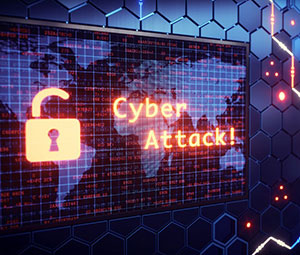 Protecting schools from cyberattacks is crucial to ensure the security of sensitive information, maintain operational continuity and safeguard the well-being of students and staff. Here are some steps that schools can take to enhance their cybersecurity posture:
Protecting schools from cyberattacks is crucial to ensure the security of sensitive information, maintain operational continuity and safeguard the well-being of students and staff. Here are some steps that schools can take to enhance their cybersecurity posture:
- Security Awareness Training: Educate students, teachers, and staff about basic cybersecurity practices. Teach them how to recognize phishing emails, avoid clicking on suspicious links, and report any unusual activities.
- Regular Updates and Patches: Keep all software, operating systems, and applications up to date with the latest security patches. Cybercriminals often exploit known vulnerabilities in outdated software.
- Strong Password Policies: Enforce strong password policies that require complex passwords and regular password changes. Implement multi-factor authentication (MFA) wherever possible to add an extra layer of security.
- Network Security: Use firewalls, intrusion detection and prevention systems, and network segmentation to prevent unauthorized access to sensitive data. Regularly monitor network traffic for any unusual activities.
- Endpoint Security: Install and maintain up-to-date antivirus and anti-malware software on all devices used within the school network. Consider implementing endpoint detection and response (EDR) solutions for advanced threat detection.
- Data Encryption: Encrypt sensitive data both in transit and at rest. This helps protect information even if it falls into the wrong hands.
- Backup and Disaster Recovery: Regularly back up critical data and systems, and test the restoration process to ensure that data can be recovered in the event of a cyberattack or data loss.
- Access Control: Implement role-based access control (RBAC) to ensure that users have access only to the information and systems necessary for their roles.
- Vendor Security: Ensure that third-party vendors who provide services to the school have strong cybersecurity practices in place. This includes cloud service providers, online learning platforms, and other technology partners.
- Incident Response Plan: Develop a comprehensive incident response plan that outlines the steps to take in case of a cyberattack. Assign roles and responsibilities, establish communication protocols, and conduct regular drills.
- User Privileges and Monitoring: Limit user privileges to the minimum required for their tasks. Monitor user activity for any signs of unauthorized or suspicious behavior.
- Regular Security Audits: Conduct regular security assessments and penetration testing to identify vulnerabilities and weaknesses in the school's systems and infrastructure.
- Physical Security: Don't overlook physical security measures. Ensure that servers, networking equipment, and other sensitive hardware are located in secure areas with restricted access.
- Policy Development: Develop and enforce cybersecurity policies and guidelines that cover areas such as acceptable use of technology, data protection, and incident reporting.
- Engage with Experts: Consider partnering with the experts at Coulson Technologies. They specialize in protecting educational institutions from cyber threats.
By implementing these measures, schools can significantly reduce their risk of cyberattacks and better protect their digital assets and stakeholders. Keep in mind that cybersecurity is an ongoing process that requires continuous monitoring, adaptation, and improvement.
Concerned about your cybersecurity, contact us for a free security review.












